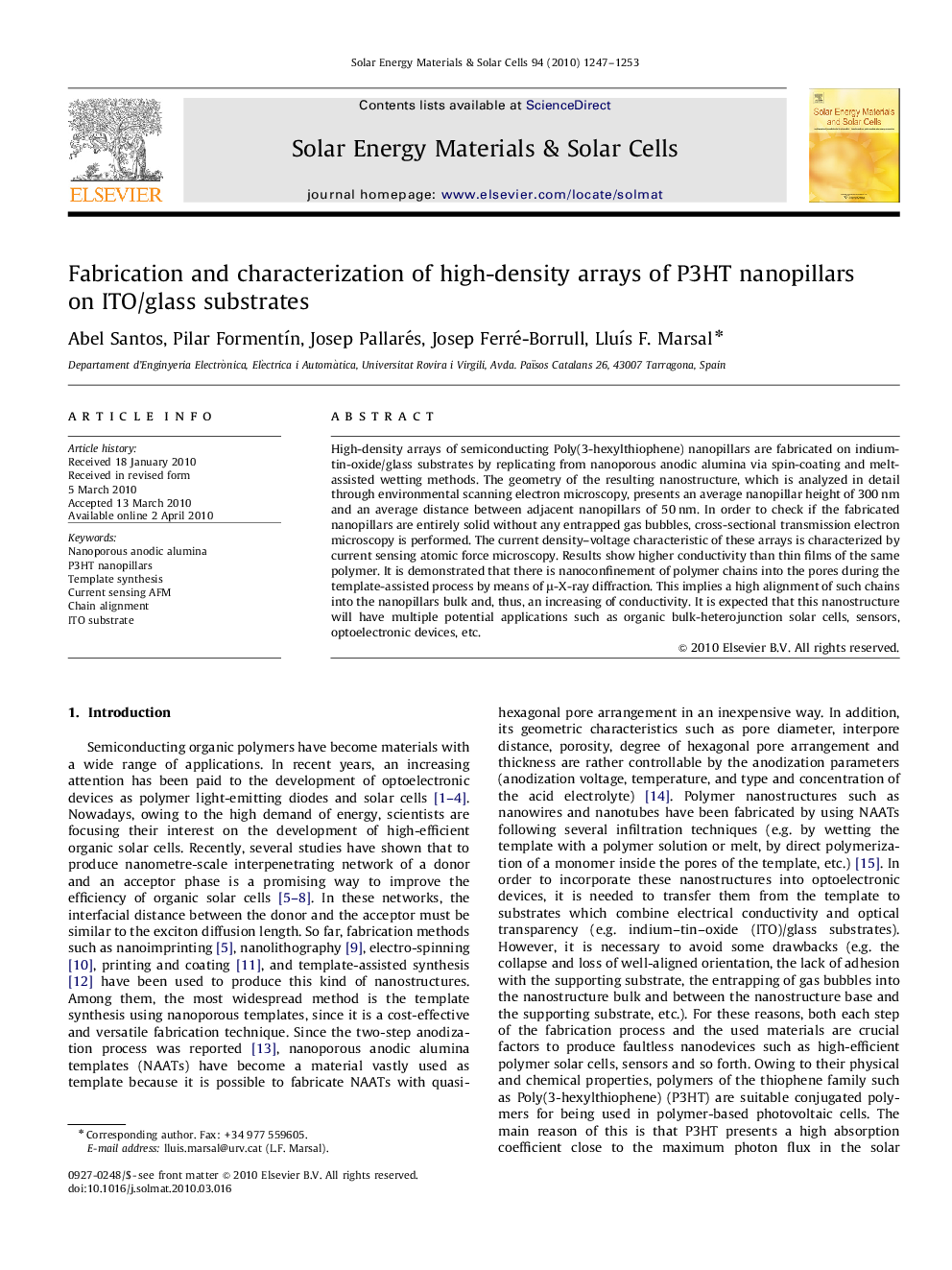| Article ID | Journal | Published Year | Pages | File Type |
|---|---|---|---|---|
| 79447 | Solar Energy Materials and Solar Cells | 2010 | 7 Pages |
High-density arrays of semiconducting Poly(3-hexylthiophene) nanopillars are fabricated on indium-tin-oxide/glass substrates by replicating from nanoporous anodic alumina via spin-coating and melt-assisted wetting methods. The geometry of the resulting nanostructure, which is analyzed in detail through environmental scanning electron microscopy, presents an average nanopillar height of 300 nm and an average distance between adjacent nanopillars of 50 nm. In order to check if the fabricated nanopillars are entirely solid without any entrapped gas bubbles, cross-sectional transmission electron microscopy is performed. The current density–voltage characteristic of these arrays is characterized by current sensing atomic force microscopy. Results show higher conductivity than thin films of the same polymer. It is demonstrated that there is nanoconfinement of polymer chains into the pores during the template-assisted process by means of μ-X-ray diffraction. This implies a high alignment of such chains into the nanopillars bulk and, thus, an increasing of conductivity. It is expected that this nanostructure will have multiple potential applications such as organic bulk-heterojunction solar cells, sensors, optoelectronic devices, etc.
